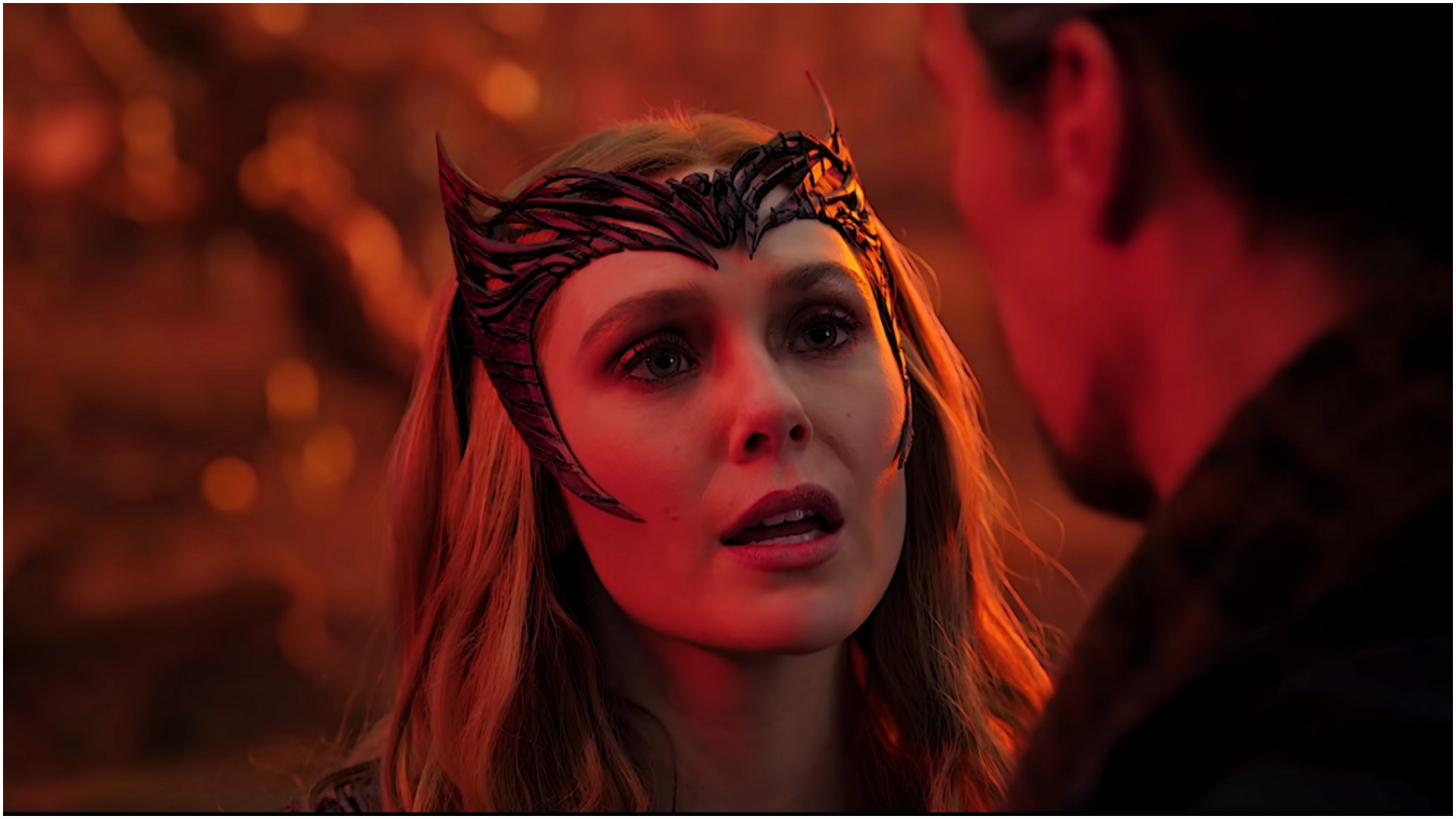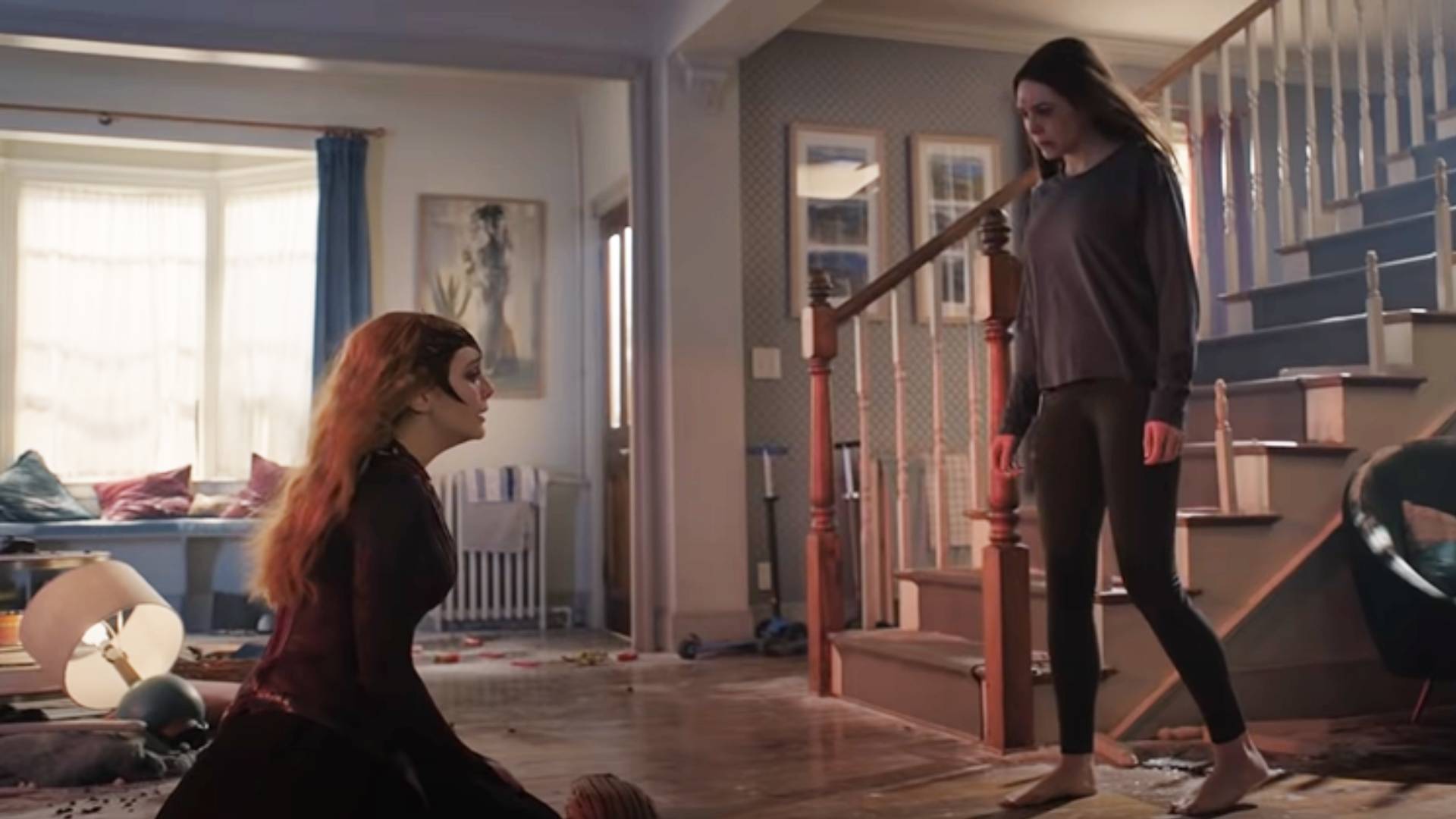Doctor Strange 2 misses a trick with Wanda – but the MCU can still fulfill her potential
Multiverse of Madness stumbles with Scarlet Witch, but all is not lost

The Scarlet Witch is unleashed. No longer an Avenger, Wanda Maximoff is instead the villain of Doctor Strange in the Multiverse of Madness, and she's hellbent on a vicious, murderous quest to steal the powers of young America Chavez and escape to another, happier universe where her children – Billy and Tommy – are still alive.
But from the first scene of Multiverse of Madness, it's made clear that Wanda has fully succumbed to the evil of the Darkhold, the ancient spell book that corrupts all it touches. That's used to explain her sudden turn, and it's a shortcut that seriously hobbles how effective she is as a villain. It also indulges in a toxic trope that WandaVision avoided: that of a woman so powerful she loses her mind.
This all too common trope has swallowed up female characters like Jean Grey and Daeneyrs Targaryen before (just look at TV Tropes' "Unstable Powered Woman" page for many, many more examples), and the fictional women who fall victim to it end up becoming an out of control threat who must be stopped. In WandaVision, Wanda created Westview by mistake – overwhelmed by grief, the red Hex burst from her body and produced the idyllic, sitcom-style life where Vision lived once more, and the happy couple eventually had magical children of their own. The downside, of course, was that everyone within Westview was held captive by Wanda's magic.
That would seem a classic example of the trope, but the series subverted it entirely when Wanda, fully in control of her newfound powers as the Scarlet Witch, made the conscious decision to dissolve the Hex, erasing Vision and their children, but freeing the innocent people stuck inside. "It was extremely important to me that we not do the lazy thing of having a superpower lady who can't handle her powers and goes crazy," WandaVision head writer Jac Schaeffer told our sister publication Total Film back in 2021.

Unfortunately, that didn't transfer to Multiverse of Madness. The next time we see Wanda, she's in the sinister grip of the Darkhold. Its malign influence has exacerbated her grief to the point that she attacks Kamar-Taj, threatens countless people, brutally murders almost the entire Illuminati, and spends the film's runtime trying to kill a teenager, all to reunite with her lost and dearly loved children. Here's the Unstable Powered Woman in all her glory. It's not her powers that Wanda can't control, though, but the Darkhold itself. Thanks to that book, Wanda is no longer the person who brought down the Hex at the cost of her children's lives because it was the right thing to do. Now, she needs to be taken out for the safety of everyone: whether that's being trapped in the mirror dimension, caught in a cage of spells, or punched through the multiverse.
In fairness, the Darkhold is an equal opportunity corrupter. 838-Doctor Strange uses it to stop Thanos, and because of its sinister power, the Illuminati kill him once he's done. The biggest problem with Wanda, though, lies in the fact that this is a dramatic change to a character we've spent hours watching develop across movies and a TV show. Reducing such a huge character shift down to "the Darkhold made her do it" feels lazy, and is an unsavory use of the trope, made worse by WandaVision's efforts to avoid it.
Then there's the fact that, while Wanda is undeniably an excellent villain in the film – terrifying, relentless, and unstoppable – it's all undermined by the lurking knowledge that this isn't really her, and her behavior is wildly out of line with what we've seen before. One of the things that made Thanos such a strong villain was that he wholeheartedly and disturbingly believed in his murderous cause. Scarlet Witch would be all the more effective as a serious foe if she was acting entirely under her own power, completely in control of herself.
Sign up for the Total Film Newsletter
Bringing all the latest movie news, features, and reviews to your inbox

Wanda also ends the movie exactly where she started it. In WandaVision, she did something terrible for love, and exiled herself after doing her best to fix it. In Doctor Strange 2, she once again does something terrible for love, and seemingly sacrifices herself to try and fix it. That's the consequence of putting her villainy down to an external influence: once it's broken, she reverts back to the Wanda we recognize, which seriously short-changes her character arc.
But all is not lost – the MCU can still fulfill the Scarlet Witch's full potential as either a great hero or a devastating villain. Doctor Strange 2 leaves Wanda in the perfect place to do just that, too. She has destroyed all the Darkholds across the multiverse, and her fate is ambiguous, meaning the door is open for her to return free of the book's corruption. Wanda could easily be redeemed, considering she willingly brought down Cthon's Tower at the end of the film and gave up on her attempts to traverse the multiverse – and White Vision is still out there somewhere, after all.

Doctor Strange 2 Easter eggs: The 22 biggest Marvel references
The alternative is that Wanda continues down her shadowy path and becomes a villain on her own terms. We already know from Agatha Harkness that the Scarlet Witch is fated to destroy the world, though Wanda insisted the other witch was wrong about her. Her grief is a powerful motivator, and her actions in WandaVision demonstrate that she's not afraid to do something morally ambiguous – or even outright wrong – for her own ends. The weight of everything she's done in Multiverse of Madness may even prove too much to bear, too, and she could decide she's beyond redemption and go all in on that darkness.
But whether she chooses to embrace her dark destiny or not, it's clear that it needs to be a character-driven decision: not a consequence of a magical artefact, and not because Wanda can't handle her immense power. Only then can the Scarlet Witch's full potential be unlocked.
Doctor Strange in the Multiverse of Madness is in theaters now. For much more on the movie, check out our guides to:
- Doctor Strange 2 ending explained
- Doctor Strange 2 post-credits scenes explained
- Our guide to Marvel Phase 4
- The rumored Doctor Strange cameos that never came true
- What does 616 in Doctor Strange 2 mean?
- Where Doctor Strange 2 fits on the Marvel timeline
- Who is Hayley Atwell in Doctor Strange 2?
- Who plays Captain Marvel in Doctor Strange 2?
- Who is Charlize Theron in Doctor Strange 2?
- Who is John Krasinski in Doctor Strange 2?
- Who is Black Bolt in Doctor Strange 2?
- Patrick Stewart is Professor X – but not the one you think
- Our full WandaVision recap
- The Marvel movies and shows to watch before Doctor Strange 2
- When is Doctor Strange 2 on Disney Plus?
- How to watch the Marvel movies in order
- Is Doctor Strange 2 too scary for children?
You can catch up on the MCU on Disney Plus.

I'm a Senior Entertainment Writer here at GamesRadar+, covering all things film and TV for the site's Total Film and SFX sections. I previously worked on the Disney magazines team at Immediate Media, and also wrote on the CBeebies, MEGA!, and Star Wars Galaxy titles after graduating with a BA in English.


